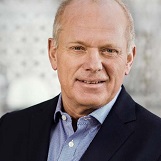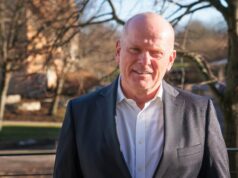
Saniona’s CEO shares 2024 business development roadmap
Saniona is focusing on partnering and investing the proceeds from such partnerships to build shareholder value. The goal is long-term success and being less reliant on conventional financing routes. In an interview with BioStock, Saniona’s CEO Thomas Feldthus talks about this in more detail. We also learn more about the new focus on epilepsy treatment and the potential share issue of 140 million SEK in January.
Saniona is focusing on the discovery and development of medicines modulating ion channels. The company’s epilepsy pipeline includes the phase II ready asset SAN711, the preclinical compound SAN2219 and the drug-discovery Kv7-program.
Saniona has three clinical programmes outside the epilepsy area positioned for partnering. The most advanced, tesofensine, has progressed towards regulatory approval for treating obesity in Mexico by Saniona’s partner Medix. Tesomet is ready for phase IIb in rare eating disorders, and SAN903 is ready for phase I in inflammatory bowel disease.
Saniona also has a partnership with Boehringer Ingelheim. On December 18th, Saniona announced the extension of this partnership for up to two years. Saniona may receive up to 76.5 million Euro in milestone payments as well as royalties on worldwide net sales of resulting products under the collaboration. Besides these partnerships, Saniona also has ongoing collaborations with AstronauTx and Cephagenix.
“All the epilepsy products may be developed for rare epilepsy indications. Many of the products may even be developed for rare paediatric epilepsy indications that not only qualify for orphan drug designation but also for a voucher, which can be sold for cash at a price of about 100 MUSD.” – Thomas Feldthus, CEO Saniona
Comments from the CEO

In Saniona’s recent communication, the company’s focus has shifted from rare diseases in general to homing in on epilepsy. BioStock got in touch with Saniona’s CEO Thomas Feldthus, who discuss this in length while also giving a roadmap for 2024.
Thomas, what brought about the change of focus to epilepsy?
– We had several strategy sessions during the summer of 2022, where we discussed the immediate situation and what we should do with the company in the mid-to-long term.
– When looking into the future, I recall that we drew three Olympic circles, which were named: 1) ion channels; 2) CNS and 3) rare diseases. Tesomet was placed in the cross-border area between rare diseases and CNS; SAN903 was positioned in the ion channel circle. The rest of the pipeline programmes were placed in the cross-border area between ion channels and CNS with the potential to be moved to the cross-border centre of all three circles if we decided to develop them for epilepsy indications. During this exercise, it became evident to me that Saniona’s employees had a deep knowledge of epilepsy and that the company already had strong ties to clinical epilepsy centres and academic groups.
– We subsequently reached out to Pierandrea Muglia (now a board member). We knew him well; he is a Saniona co-founder. He is an MD by training and has been responsible for the clinical development of epilepsy programmes at UCB for a decade before founding his own paediatric epilepsy company, Grin Therapeutics.
– The more we analysed this, the more interesting it became. Apart from cash, we had all the elements to make a successful epilepsy company including the right capabilities, the right connections, the right products, and the right technologies. We had the fundamentals in place to build a successful epilepsy company with sustainable competitive advantages.
– We are still interested in rare diseases. All the epilepsy products may be developed for rare epilepsy indications. Many of the products may even be developed for rare paediatric epilepsy indications that not only qualify for orphan drug designation but also for a voucher, which can be sold for cash at a price of about 100 MUSD. Thus,
- SAN711 will initially be positioned for childhood absence seizures, which qualify for an orphan drug designation. This can be extended to, e.g. juvenile absence seizures and myoclonic absence seizures, both of which also qualify for orphan drug designation.
- SAN2219 has initially been positioned for acute repetitive seizures, which qualify for orphan drug designation. This product, however, could also be useful for drug-resistant focal onset seizures, which isn’t rare.
- Then we have a compound in our GABA library, which has passed our candidate selection phase. It represents a very powerful antiseizure medication but is less selective compared to SAN711 and SAN2219. We are considering whether this could be useful for the treatment of a severe and rare paediatric epilepsy syndrome, where the children should take a dose prior to going to bed. This product may potentially also be used for treatment of paediatric patients with mutations in the GABA ion channels, which lead to loss of function of GABAergic neurons and severe epilepsies – a super rare indication.
- Finally, we have the Kv7 channel programme, which we initially have positioned for focal onset seizures, because we believe that it will be best in class due to its highly selective profile and pharmacology. However, this product may potentially also be developed for the treatment of paediatric patients with a genetic mutation in the Kv7 channels. There are quite a lot of these patients. Combined, this patient population appears to be of the same size as some of the more common epileptic syndromes, such as Dravet syndrome. However, it will still be considered a rare disease.
Can you provide more details on the phase II-ready candidate SAN711 and how its precision approach differs in treating non-convulsive generalized epileptic seizures?
– SAN711 targets the GABAA a3 channels only. These types of ion channels are almost exclusively expressed in the thalamus, which is placed deep in the brain. The absence of seizures are caused by an uncontrolled firing of neurons in the thalamus. We have shown that we can tackle the uncontrolled firing with SAN711 in the gold standard animal model for absence seizures. As SAN711 will not affect other parts of the brain, it represents a precision approach for the treatment of absence seizures.
– It may also have a disease-modifying potential in some of the patients because the repetitive firing of neurons may lead to cognitive impairment. As an extreme example, some paediatric patients are going into status epilepticus with absence seizures every night when they sleep. This has severe consequences for the patients as they are unable to consolidate what they are learning during the day.
– The seizures typically disappear when they become teenagers, but in many cases, this will be too late to obtain a normal life. SAN711 may be very useful for some of these patients. However, we would probably need an even more powerful drug to help them all, which I alluded to before.
You describe the Kv7 programme as having a ‘truly new and innovative mode of actions and selectivity profile.’ How does it differ from the competition in the field?
– The Kv7 channel target is interesting because it is a clinically and commercially validated target for the treatment of resistant epilepsy patients without a drug on the market following the withdrawal of Retigabine in 2017.
– The Kv7 channel family consist of five members where Kv7.2 and Kv7.3 are relevant for the treatment of epilepsy. The Kv7.1 channel should be avoided because it controls the heart. Kv7.4 is not expressed in the brain, but in a lot of other tissues. Kv7.5 is expressed in the brain, but it appears to have another function, which would lead to CNS side effects and even seizures if activated. GSK’s retigabine and Xenon’s compound, XEN1101, activate all the Kv7 channels apart from Kv7.1.
– The activation of the Kv7.4 channels leads to dropouts in clinical trials and the activation of Kv7.5 appears to lead to dose limiting CNS side effects and dropouts too. To our knowledge, Saniona is the first company that has been able to make truly selective compounds towards Kv7.2 and Kv7.3. Our data suggest that we have a very high therapeutic index (a measure of the difference in dose between the desired anti-seizure effect and the side effects) compared to competing pipeline programmes, which means that we potentially can obtain both higher efficacy and fewer side effects.
Your epilepsy programme has generated much interest. How does this contribute to Saniona’s strategic position in the market?
– Saniona will have a unique position in the Swedish public market as it will be the first company to focus on epilepsy. It is easy to explain the investment case to investors. Saniona is well-positioned to be successful in epilepsy with the right capabilities, products, and technologies. Epilepsy is a highly interesting, large and growing market with significant medical needs.
– Innovation is driven by biotech companies, who can commercialise the product themselves for most indications. There is a clear peer group of successful biotech companies focusing on epilepsy illustrating the potential. There is a high level of M&A activity, and the transactions are made at an attractive level.
The collaboration with AstronauTx announced earlier this year was highlighted as a significant partnership. What are the main goals of the collaboration and how do these align with Saniona’s broader objectives?
– This programme focuses on a novel undisclosed target with the aim of developing a new first-in-class treatment option for patients with Alzheimer’s disease. It is truly novel. But I don’t think that I can provide much more information at this stage. The collaboration will also secure income for the company and ensure that we can keep a minimum efficient scale in our research.
– We focus our internal efforts on epilepsy but remain a CNS company when it comes to research collaborations. We have research collaborations within schizophrenia, Alzheimer’s disease, and migraine today. We may even go beyond that when it comes to research collaborations. As an example, we have significant know-how and a lot of chemistry for the development of IK blockers, which could be relevant for companies interested in fibrosis.
You are planning to carry out a rights issue from 22 January to 5 February, aiming to raise approximately 140 million SEK. How will the new capital take Saniona closer to future partnerships?
– This financing does not change our partnering strategy. We have ongoing discussions with companies about our preclinical and clinical assets. I am confident that we will be able to establish new collaborations on several of our assets without having to make additional investments in them.
– We will use the raised funds in this financing to mature some of our epilepsy assets (such as the SAN711 and the Kv7 programme) and pay back some of our debt while we are establishing new partnerships.
– However, I would like to emphasise that partnering is not the final goal. It is not the company strategy as such. We consider partnering as a way to create value on a specific programme and as a finance vessel to build the company within epilepsy.
To wrap up, what key milestones should investors look out for in Saniona’s 2024?
- We will continue our business development efforts with the objective of making one or more new collaboration agreements.
- Medix may obtain regulatory approval and launch tesofensine for obesity in Mexico, resulting in mid-teens royalties to Saniona.
- Existing research collaborations may reach an inflection point resulting in milestone payments to Saniona.
- We expect to select a clinical candidate in the Kv7 programme for epilepsy.
- The activities for maturing our epilepsy assets including SAN711 and the Kv7 programme will depend on the outcome of our financing round and the realisation of the above income streams.

